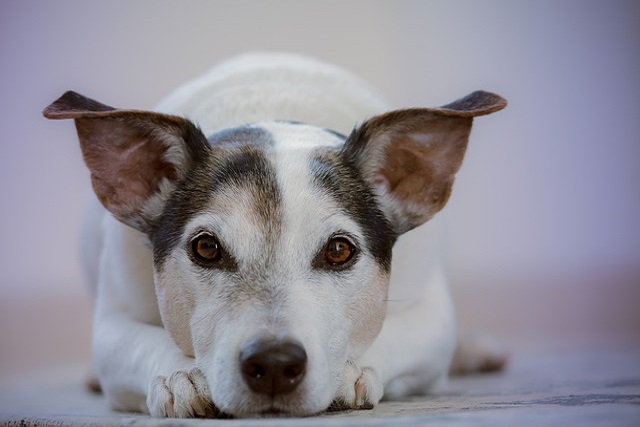
How do i train my dog to be obedient?
Watching your dog dart across the park ignoring your calls isn’t just frustrating—it can put them at risk near busy streets or public spaces.
On a sunny afternoon, you sit on the sofa, holding a book in your hand, enjoying a rare moment of tranquility. However, your dog doesn't seem to want to cooperate with this tranquility. It runs around the room, jumping up and down, and even tries to grab the book in your hand with its claws. You looked at it helplessly, thinking to yourself: Why is my dog always so active? How can I calm it down?
Firstly, we need to understand the reasons for dogs being overly active. The activity level of dogs is closely related to their breed, age, health status, and living environment. Some dog breeds, such as Border Collies, Jack Russell Terriers, and Labrador Retrievers, are naturally energetic and require a lot of exercise and stimulation to expend their energy. If these dogs do not receive sufficient exercise or mental stimulation, they may release excess energy through overactive behavior. In addition, puppies and young dogs are usually more active than adult dogs, which is a normal phenomenon during their growth process. However, if a dog's hyperactive behavior persists into adulthood or affects their daily life and health, we need to take measures to help them calm down.
Exercise is one of the most natural and effective ways to help overactive dogs expend excess energy. Regular exercise every day can not only meet the physiological needs of dogs, but also help them maintain their mental health. You can develop a reasonable exercise plan based on the breed and age of your dog. For example, large dogs such as Border Collies and Labrador Retrievers require at least one hour of vigorous exercise per day, such as running, swimming, or playing frisbee; Small dogs can satisfy their exercise needs through walking or indoor games. Exercise not only helps dogs burn energy, but also enhances their physical fitness and improves their immunity. In addition, exercise can help dogs establish regular lifestyle habits, making it easier for them to calm down after exercise.
In addition to physical exercise, mental stimulation is also an important means of helping overactive dogs calm down. Dogs are intelligent animals that require constant learning and challenges to maintain brain activity. You can provide mental stimulation through training, intellectual games, and interactive toys. Training can not only help dogs learn basic obedience to commands, but also enhance their trust and understanding with their owners. Intelligence games, such as hidden food toys or puzzle solving toys, can help dogs exercise their brains and expend energy while playing. Interactive toys, such as automatic pitchers or pull toys, can keep dogs active while playing alone. By providing rich mental stimulation, you can help dogs find balance and satisfaction without relying on overly active behavior.

Environmental management is also key to helping overactive dogs calm down. A quiet and comfortable environment can make dogs feel safe and relaxed. You can set up a dedicated resting area for your dog, placing a comfortable mattress or nest, giving them a place to rest peacefully. In addition, avoid making too much noise or disturbance while the dog is resting, such as speaking loudly or making sudden movements, which may make the dog feel uneasy and trigger hyperactive behavior. You can also create a relaxing atmosphere by playing soft music or using aromatherapy to help your dog calm down.
Diet and nutrition also have a significant impact on the behavior of dogs. Overactive dogs may require more energy to support their activities, but excessive consumption of high calorie foods can lead to excess energy, exacerbating hyperactive behavior. Therefore, we need to develop a reasonable diet plan based on the age, weight, and activity level of the dog. Choose high-quality dog food to ensure that dogs consume sufficient protein, fat, and carbohydrates, while avoiding excessive additives and artificial colors. You can also add some foods rich in Omega-3 fatty acids, such as fish or flaxseed oil, to your dog's diet, which can help improve their nervous system function and help them stay calm.
As owners, our behavior and emotions can also have a profound impact on the behavior of dogs. Dogs are very sensitive animals that can sense changes in their owners' emotions. If we show anxiety, tension, or impatience, dogs may respond to our emotions through overly active behavior. Therefore, we need to remain calm and patient, and guide the dog with a positive attitude. When dogs exhibit hyperactive behavior, we can guide them through a calm tone and firm attitude, rather than correcting them through punishment or scolding. By establishing positive interaction patterns, we can help dogs learn to calm down at appropriate times.

Watching your dog dart across the park ignoring your calls isn’t just frustrating—it can put them at risk near busy streets or public spaces.

New puppy owners often find themselves rushing to clean up accidents before they set in, and that’s where puppy pad training becomes a game-changer.

If you've noticed your dog's waistline disappearing and your veterinarian has mentioned those few extra pounds, your first instinct might be to simply reduce the amount of food in their bowl.

Training a dog to use a designated spot indoors isn’t as daunting as many new owners fear, but it does take consistency and an understanding of your pet’s needs.

That moment of dread on a walk is all too familiar for many new dog owners. You see another dog approaching down the sidewalk of your neighborhood

If the sight of another dog on your neighborhood walk makes your heart sink as your own dog erupts into a frenzy of barking and lunging, you're not alone.